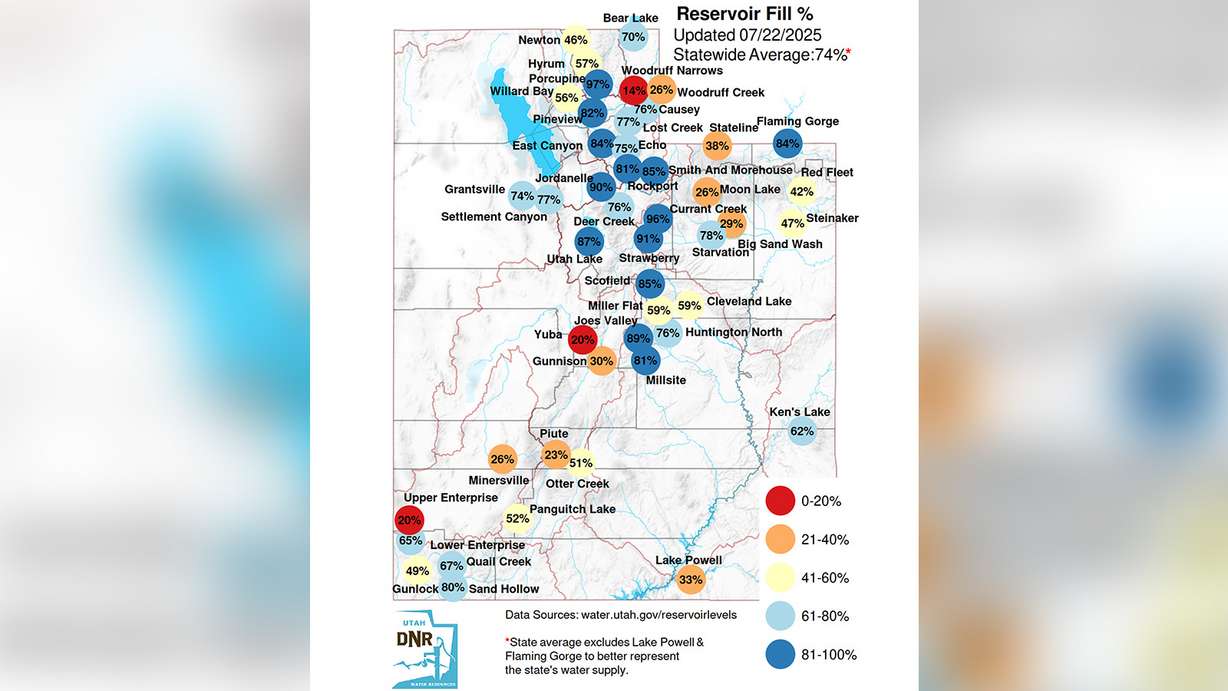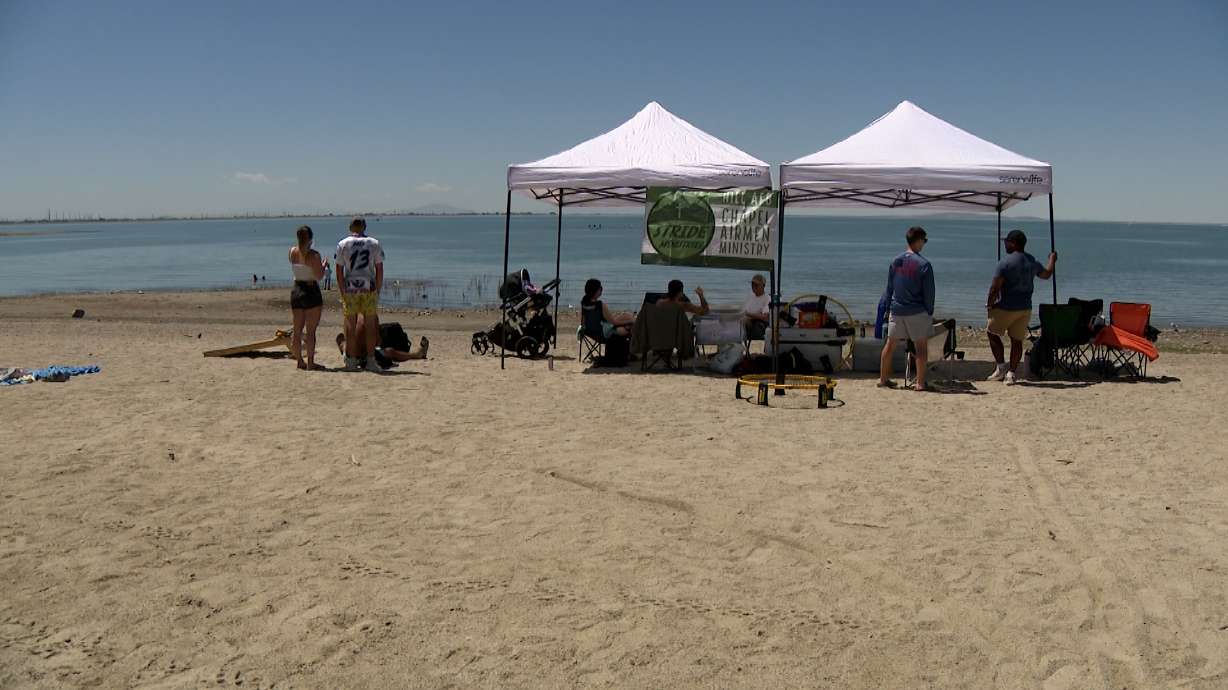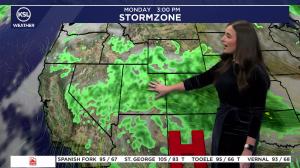- Utah's reservoirs dropped from 86% to 74% capacity amid dry conditions from June to July.
- Nearly 60% of Utah is in severe or extreme drought, affecting water supply and demand.
- Gov. Spencer Cox urges water conservation as drought conditions persist across the state.
SALT LAKE CITY — State water managers say they're surprised by how quickly Utah's reservoirs are dropping amid hotter and drier conditions this summer, and other factors.
Utah's reservoir system is now about 74% full after ending June at 86% capacity. While it's still a tick above the July median average, Utah Division of Water Resources officials point out that the system typically loses about 2 percentage points between June and July on average.
Most of this is reflective of the "increased demand" caused by the dry conditions over the past few months, they added. It has prompted some local communities to implement new water restrictions over supply concerns.
"Restrictions are very localized, and we rely on Utahns to be in touch with their water provider for any restrictions that may be in place," said Candice Hasenyager, director at the Utah Division of Water Resources, in a state water update published on Tuesday.
Nearly 60% of the state is either in severe or extreme drought, while the rest remains in moderate drought, according to the U.S. Drought Monitor. Differing precipitation trends over the first half of the year have factored into this.
It's been especially dry in northern Utah over the past few months, following a relatively normal snowpack accumulation. Precipitation collection totals between April 1 and June 30 ranked in the bottom 10 for 10 counties across Utah's northern half, compared to similar three-month periods since 1895, per federal climate data.
Salt Lake City is currently on pace to end its water year with more than 4 inches of precipitation below its normal. The drier conditions also lowered the region's spring snowmelt efficiency.
Precipitation collection was closer to normal across Utah's southern half since April, but the region is also coming off an unproductive winter that produced record-low and near-record-low snowpack totals across its basins.
Temperatures have only aided drought conditions statewide. Average temperatures during the first half of this year were among the 15 warmest on record for all 29 counties, spanning the past 131 years.
Monsoonal storms — often dumping heavy precipitation in localized areas during the summer — have yet to lift regions out of drought. Summer storms generally don't add to the state's water supply as much as they help reduce evaporation within the state's lakes and reservoirs.
Some projects have also diminished the state's water supply. For instance, Willard Bay, which was 98% full this time last year, is on its way to 50% capacity to make way for infrastructure repairs.
But many reservoirs are low just because of the lower snowpack or poor spring snowmelt.
Some reservoirs, like Woodruff Creek in northeast Utah, are now down to 14% capacity. Upper Enterprise and Yuba reservoirs in central and southern Utah remain at 20% capacity. Seven other key reservoirs that factor into the state's water supply have fallen to 40% capacity or lower.

Hasenyager said the lower numbers are concerning because reservoirs offer not just a collection of water for now, but storage during prolonged droughts.
"They get us through droughts, provide flood protection and create a habitat for wildlife," she said.
The Great Salt Lake has also suffered this summer. Its southern arm is down to 4,192.2 feet elevation, losing about 1½ feet since its peak this spring. Its northern arm is now listed at 4,191.8 feet elevation, as the difference between the two sides continues to shrink.
It's unclear how long the drought conditions will persist, which is why Utah Gov. Spencer Cox called on Utahns to conserve water during his monthly briefing with Utah reporters last week. He said it's OK for residents to let their lawns turn yellow this summer.
The state offers other tips on how to reduce indoor and outdoor water consumption at slowtheflow.org.
"While we need faith and prayers, we also need people to cut back on their (water) usage," Cox said. "We're matching faith with action."









